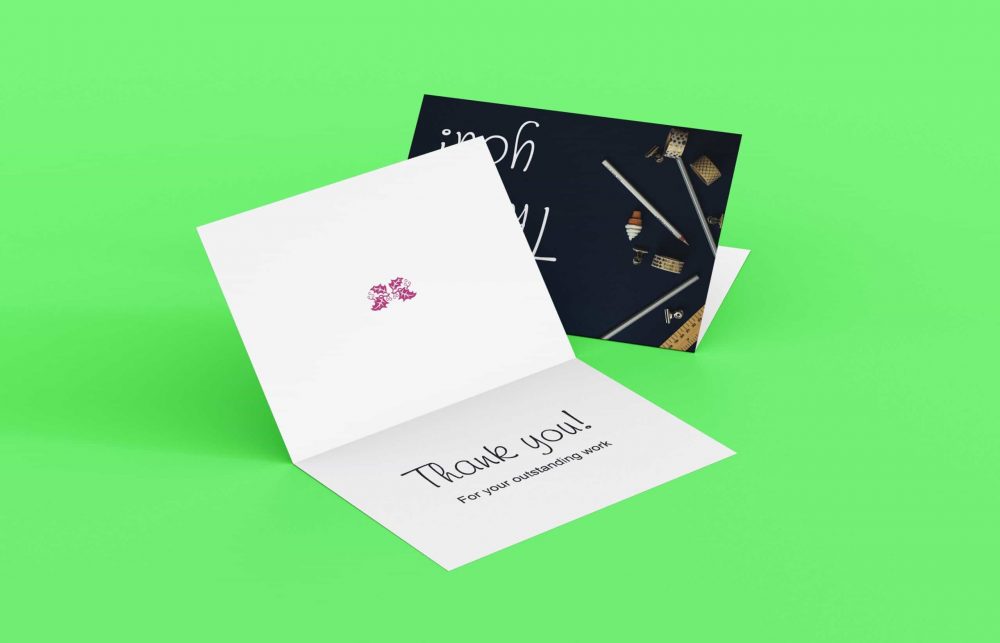Greeting cards have been a beloved tradition for centuries, offering a personal touch to celebrations, holidays, and milestones. Whether it’s a birthday, wedding, thank you note, or holiday greeting, printed greeting cards continue to hold a special place in our hearts. In this article, we’ll delve into everything you need to know about printing greeting cards—whether you’re a hobbyist or a small business owner looking to create professional-quality cards.
- Choosing the Right Greeting Card Design
Before you begin the printing process, the design of the card is key. Here are a few things to consider:
- Theme and Occasion: The occasion of the greeting card dictates its design. A wedding card will have a different tone and design compared to a thank-you card or birthday greeting.
- Color Scheme: Choose a color palette that reflects the mood of the occasion. For example, pastel colors are popular for baby showers, while vibrant reds and greens are classic for Christmas cards.
- Text and Fonts: Ensure the fonts are legible and complement the card’s design. Cursive and handwritten fonts often evoke elegance, while bold and playful fonts are great for lighthearted events like birthdays.
- Images and Graphics: High-quality images, illustrations, or even personal photos can add a unique touch to your greeting card. Make sure they are high-resolution to avoid pixelation when printed.
- Paper Types for Printing Greeting Cards
Choosing the right paper is crucial for giving your card the right feel and durability. There are several options to choose from:
- Cardstock: This is the most common paper used for greeting cards due to its thickness and durability. It can be matte or glossy, depending on your preference.
- Recycled Paper: Eco-conscious consumers prefer recycled paper, which is also available in a variety of thicknesses and textures.
- Textured Paper: Textured paper adds an extra element of luxury to your card, giving it a tactile feel that makes it stand out.
- Cotton Paper: Cotton-based paper offers a soft, luxurious feel and is often used for wedding or high-end cards.
When designing your layout, make sure to include bleed areas (extra space beyond the trim) to avoid cutting off important text or images during printing. A typical bleed size is about 0.125 inches on all sides.
- Personalizing Your Greeting Cards
What sets greeting cards apart from store-bought ones is personalization. Here are a few ways you can make your cards special:
- Handwritten Messages: After printing, leave space for a handwritten message to add a personal touch.
- Custom Illustrations or Photos: Using personal images or artwork makes the card truly one-of-a-kind.
- Embossing or Foiling: Adding these techniques can enhance the card’s elegance. While embossing raises portions of the paper to create a textured effect, foiling adds a metallic sheen.
- Die-Cut Shapes: For extra creativity, you can cut your card into unique shapes, such as hearts, stars, or custom patterns.
- Envelopes and Packaging
No greeting card is complete without a matching envelope. Here are a few packaging options to consider:
- Colored Envelopes: Adding a matching or contrasting colored envelope enhances the presentation.
- Envelope Liners: Decorative liners inside the envelope offer an extra touch of sophistication.
- Wax Seals: For special occasions like weddings, a wax seal adds a vintage flair.
- Costs and Budgeting
Printing greeting cards can range from economical to expensive, depending on your choices for paper, ink, and printing techniques. Here’s how to manage your budget:
- DIY Printing: If you’re printing cards yourself at home, you can save money by buying cardstock in bulk and using an inkjet printer.
- Outsourcing: For larger runs or higher-quality finishes, outsourcing to a professional printer will increase your costs but can offer better results.
- Custom Features: Special features like embossing, foiling, or die-cutting can increase the price, so be mindful of these extras if you’re working on a budget.
When creating greeting cards, it’s also important to consider the recipient’s profession or specific needs. For instance, if you’re designing a card for someone in the marketing field, you can incorporate a more personalized touch by including themes or colors that resonate with their career. In addition, integrating a professional element such as a customized message reflecting their work can be a thoughtful gesture. If you’re targeting professionals, you might also want to explore how you can showcase skills or even create a complementary design with a CV for marketing in mind, aligning the card’s message with their industry expertise.
Conclusion
Whether you’re making greeting cards for personal use, starting a small business, or creating them for a special event, understanding the ins and outs of printing greeting cards is key to producing beautiful, high-quality results. From selecting the perfect paper and design to choosing the right printing technique, many factors contribute to a great card. With this guide, you’re well on your way to creating stunning, personalized greeting cards that will make a lasting impression on recipients.
Keep an eye for more latest news & updates on Internet Chicks!
